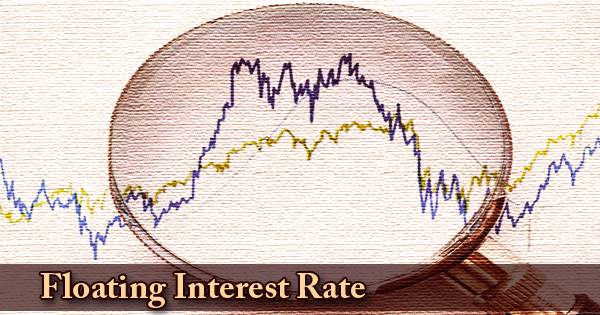In finance, Intrinsic Value or fundamental value is a measure of what an asset is worth. This measure is arrived at by means of an objective calculation or complex financial model, rather than using the current trading market price of that asset. This term is used in conjunction with the work of identifying, as nearly as possible, the underlying value of a company and its cash flow. In options pricing, it refers to the difference between the strike price of the option and the current price of the underlying asset.
An option is said to have intrinsic value if the option is in-the-money. When out-of-the-money, its intrinsic value is zero.
The intrinsic value for an in-the-money option is calculated as the absolute value of the difference between the current price (S) of the underlying and the strike price (K) of the option.
For example, if the strike price for a call option is USD $1 and the price of the underlying is USD 1.20, then the option has an intrinsic value of USD 0.20. The value of an option is the sum of its intrinsic and time value.
Intrinsic value is an umbrella term with useful meanings in several areas. Most often the term implies the work of a financial analyst who attempts to estimate an asset’s intrinsic value through the use of fundamental and technical analysis.
There is no universal standard for calculating the intrinsic value of a company, but financial analysts build valuation models based on aspects of a business that include qualitative, quantitative, and perceptual factors.
Any asset has value in and of itself that is without any influence from external factors. Stocks are no exception. The market value of stocks is influenced by many external factors. The condition of the economy and the latest numbers for GDP and unemployment move market prices. So do political things like pending legislation and presidential tweets! The intrinsic value of a stock, on the other hand, attempts to boil out the externals and value a company on its own merits. Internal factors like a firm’s products, its management, and the strength of its brands in the marketplace determine intrinsic value.
Investors are interested in cash available to stockholders. The internal factors above determine how much cash a company can expect to generate. So the methods we will learn that compute intrinsic value are based on cash generated and expectations for future growth.
Value investors try to determine the intrinsic value of stocks by methods including (but not necessarily limited to) these:
- Discounted cash flow analysis – Basically, discounted cash flow analysis uses the time value of money along with an estimation of a company’s future cash flows. The sum of the present value of all future cash flows is the intrinsic value. There are several variables that go into this type of analysis, and you can find a complete description here.
- Analysis based on a financial metric – Many investors use metrics such as the price-to-earnings (P/E) ratio in order to assess intrinsic value. For example, if the average S&P 500 component trades for 15 times earnings, a stock that trades for just 12 times earnings could be viewed as undervalued. This is the least scientific method and is generally used in combination with other factors.
- Asset-based valuation – Another popular method of determining intrinsic value consists of simply adding up all of a company’s assets, both tangible and intangible, and then subtracting its liabilities.
The dividend discount method (DDM) is a quick and easy way to evaluate intrinsic value. It is especially useful for large, stable companies. The commonly used formula for the Gordon Growth version of the DDM is focused on dividends, which are cash paid to stockholders and their future growth. It is:
Intrinsic Price of Stock = DPS1 / (r – g)
where:
DPS1 = Expected dividends one year from the present
r = the discount rate or required rate of return on the investment
g = the annual growth rate of dividends in perpetuity
For instance, Mountain Energy Company is an established public utility with a stable customer base. It expects to pay a $15 dividend per share this year, which has had a stable 3% growth over the years. We will use 3% for g in the formula. The required rate of return for this type of investment is 8%, which is r in the formula. The intrinsic value of Mountain Energy Company’s shares is:
$15 / (.08 – .03) = $300
In valuing equity, securities analysts may use fundamental analysis as opposed to technical analysis to estimate the intrinsic value of a company. Here the “intrinsic” characteristic considered is the expected cash flow production of the company in question. Intrinsic value is therefore defined to be the present value of all expected future net cash flows to the company; i.e. it is calculated via discounted cash flow valuation. (This is not a proven theorem or a validated theory, but a general assumption.)
An alternative, though related approach, is to view intrinsic value as the value of a business’ ongoing operations, as opposed to its accounting-based book value, or break-up value. Warren Buffett is known for his ability to calculate the intrinsic value of a business, and then buy that business when its price is at a discount to its intrinsic value.
Note that although stocks are assumed to be equity instruments because they represent an ownership interest in the company – the ‘equity’ label is somewhat questionable. Class C shares, for example, do not have any voting rights. The shares are considered equity instruments by finance professionals in that they are entitled to an equal share of the profits (dividends), even though shareholders lack the right to exercise control over the company.
Some analysts and investors might place a higher weight on a corporation’s management team while others might view earnings and revenue as the gold standard. For example, a company might have steady profits, but the management has violated the law or government regulations, the stock price would likely decline. By performing an analysis of the company’s financials, however, the findings might show that the company is undervalued.
Typically, investors try to use both qualitative and quantitative to measure the intrinsic value of a company, but investors should keep in mind that the result is still only an estimate.
Information Sources:
















